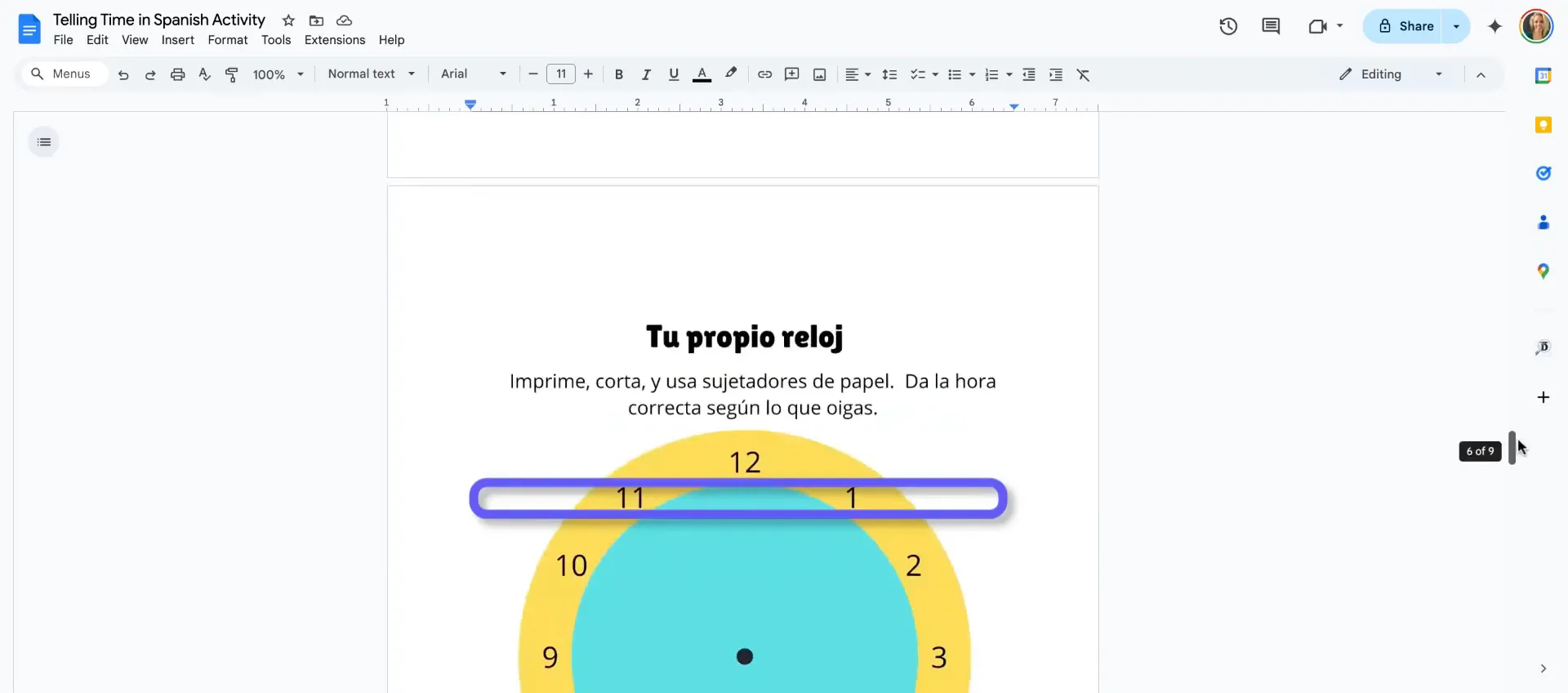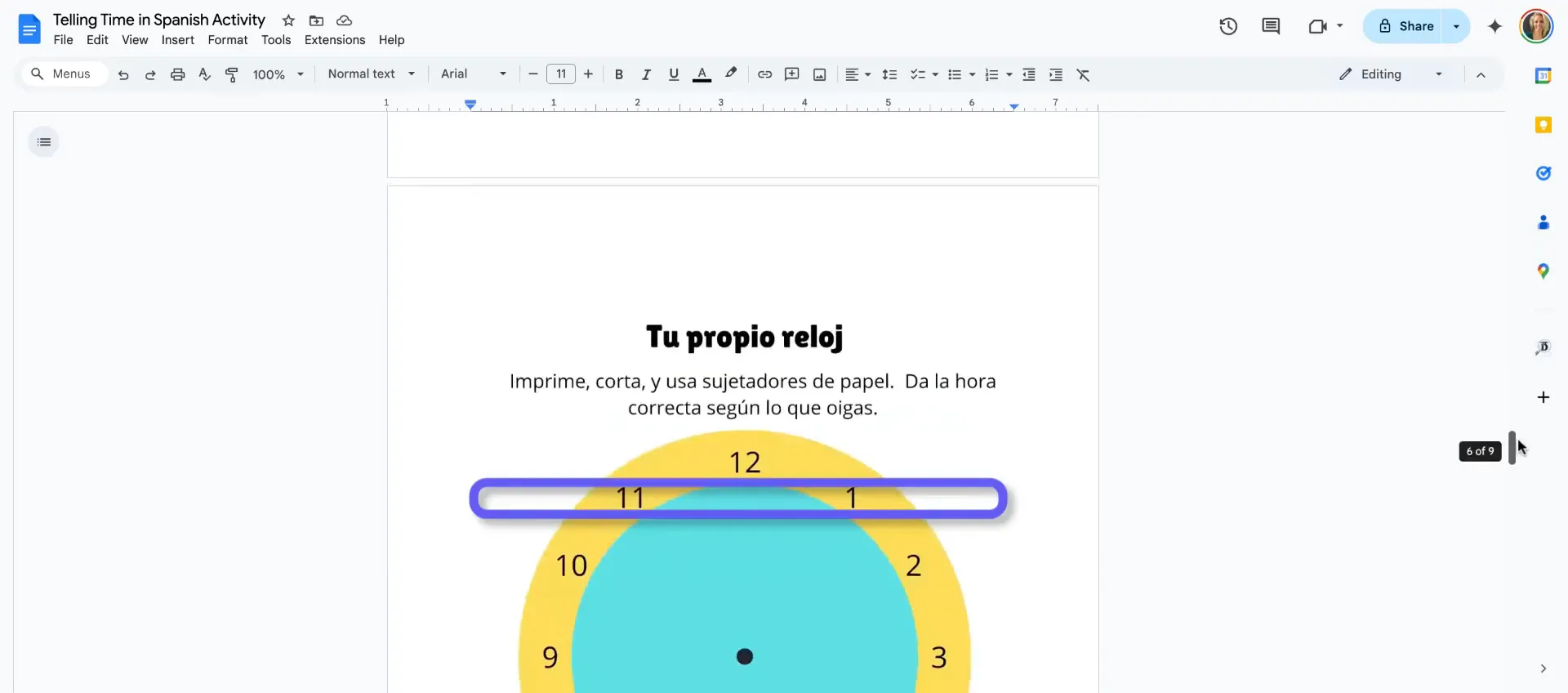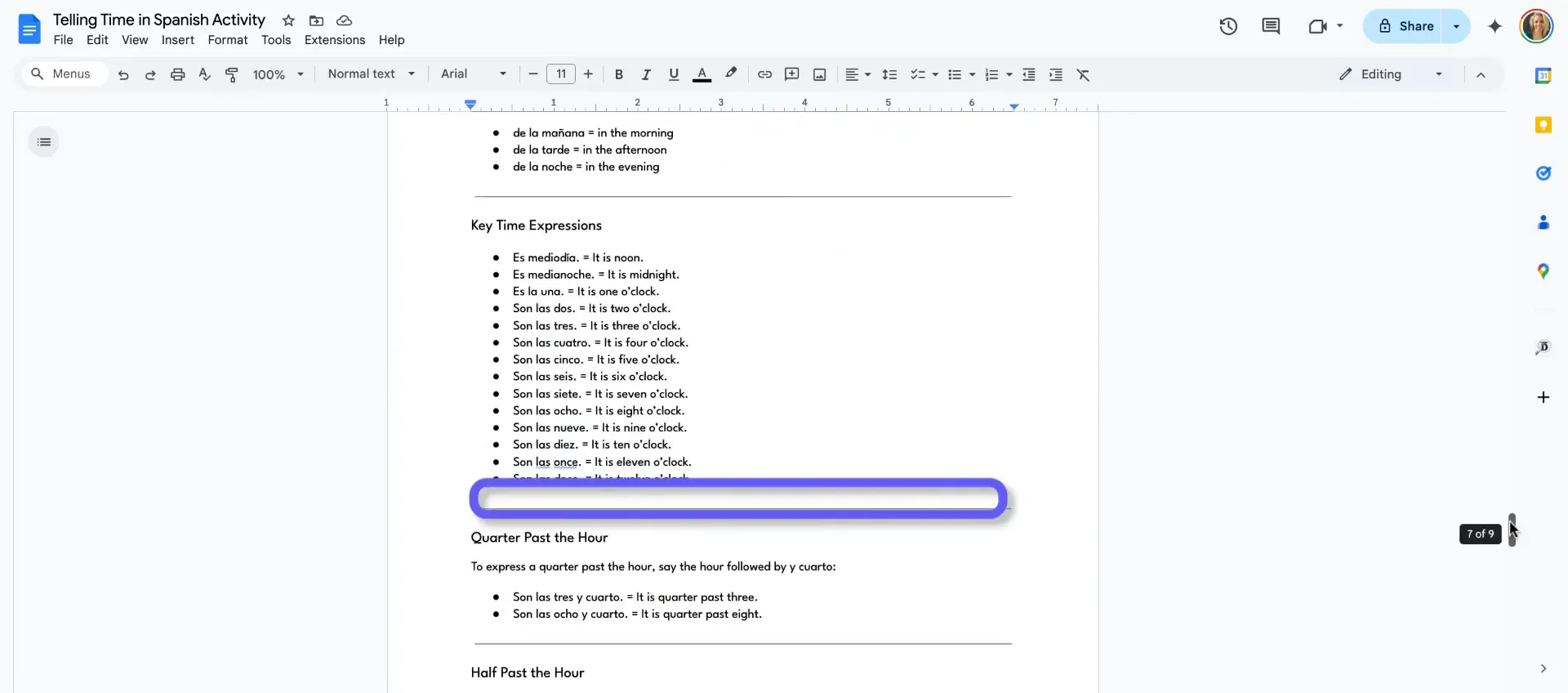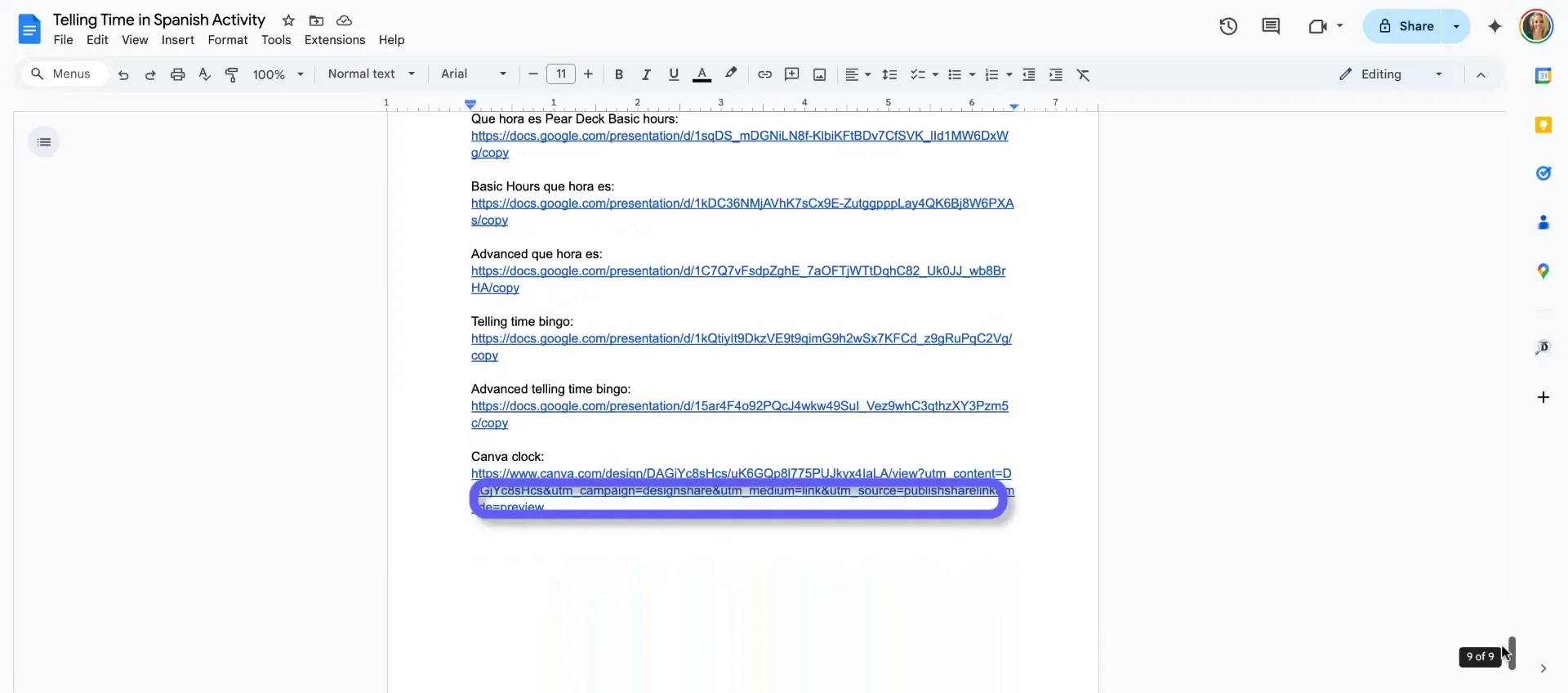
“Teaching telling time in Spanish can be really tough.”
In my video I walk through why telling time in Spanish often feels difficult for learners and share practical, classroom-ready strategies you can use tomorrow. If you’ve noticed students struggle with analog clocks or with Spanish time expressions, this guide will give you simple, high-impact activities and scaffolds to build confidence over time.
Why telling time feels hard (and what to focus on)
There are a few common reasons students struggle with telling time in Spanish:
- Many learners come from places where people use digital or 24-hour time more than analog clocks, so they lack practice reading an analogue face.
- The Spanish ways of expressing time use specific phrases (y cuarto, y media, menos) that may be unfamiliar at first.
- Students often need repeated, low-stakes practice to automate both the vocabulary and the clock-reading skill.

Core principle: Little and often
The best results come from short, frequent practice sessions rather than a single long lesson. Build a routine where students encounter telling time every day or several times a week: quick warm-ups, mini-games, exit tickets, or a five-minute clock-reading drill.

Make a simple, hands-on clock
One of the most powerful tools is a low-tech, hands-on clock that students can manipulate. Here’s a quick way to make one and use it immediately:
- Cut a circle from card stock or heavy paper.
- Label hours 1–12 around the edge and add minute marks (optional).
- Attach movable paper hands with a brad or split pin so they can rotate.
- Use the clock for modelling, guided practice, and pair activities.
Start with whole hours (Es la una, Son las dos), then introduce quarters (y cuarto), halves (y media), and “to” the hour constructions (menos).
TPR and a cheat sheet
Combine the clock with TPR (Total Physical Response) gestures to make the language memorable. Use a simple cheat sheet with gestures and set phrases so students can self-correct and practise independently.

Classroom activities that work
Below are practical activities mentioned in the video and expanded with classroom-ready instructions.
- TPR Clock Drill: Call out a time in Spanish and have students move the hands on their clocks or make a gesture. Alternate between whole hours, quarters, halves and “menos” phrases.
- Bingo: Use bingo cards with analogue clock faces or written times. Call out times in spoken Spanish and award a mark when students cover the correct square.
- Pair Decks / Matching Cards: Create card pairs of written times and clock faces. Students work in pairs to match and then say the time aloud in Spanish.
- Scavenger Hunt: Place clocks or time cards around the room and have students move around answering “¿Qué hora es?” at each station.
- Exit Ticket: One quick written or oral time question at the end of class to track progress over weeks.

Useful Spanish time phrases to introduce gradually
- ¿Qué hora es? — What time is it?
- Es la una. — It’s one o’clock.
- Son las dos. — It’s two o’clock.
- Son las dos y cuarto. — It’s 2:15.
- Son las tres y media. — It’s 3:30.
- Son las cuatro menos diez. — It’s 3:50 (ten to four).
- En punto — on the dot / exactly (e.g., Es la una en punto)
Introduce phrases in this order: whole hours → y cuarto / y media → menos constructions → more precise minutes. Keep practice cumulative.
Adapting for different contexts
If students come from 24-hour environments, explicitly teach conversions and give parallel practice:
- Show both analog and digital versions of the same time.
- Teach “de la mañana / de la tarde / de la noche” and when to say a las + 24-hour times if needed (e.g., a las 14:00 or a las dos de la tarde).
- Give repeated exposure to analog faces so students build visual fluency.
Assessment and progression
Track progress with short, regular checks: oral questions, quick written matching tasks, or timed puzzles. Increase complexity slowly—add minutes, times of day, and real-life tasks (scheduling a meetup, reading a timetable).
Final thoughts
Teaching time in Spanish doesn’t have to be a battle. Use a steady “little and often” approach, keep activities hands-on and low-stakes, and cycle through TPR, bingo, and matching activities to keep learners engaged. With regular, layered practice, students will move from hesitant to fluent in reading both the clock and the language that goes with it.
Try one new activity this week and repeat it briefly each day—confidence grows with practise.
5 Weeks of No and Low Prep Fun
Need quick, engaging activities for your class? This free guide includes 25 no-prep and low-prep ideas to save time while keeping students excited about learning.
Download your free copy now.

